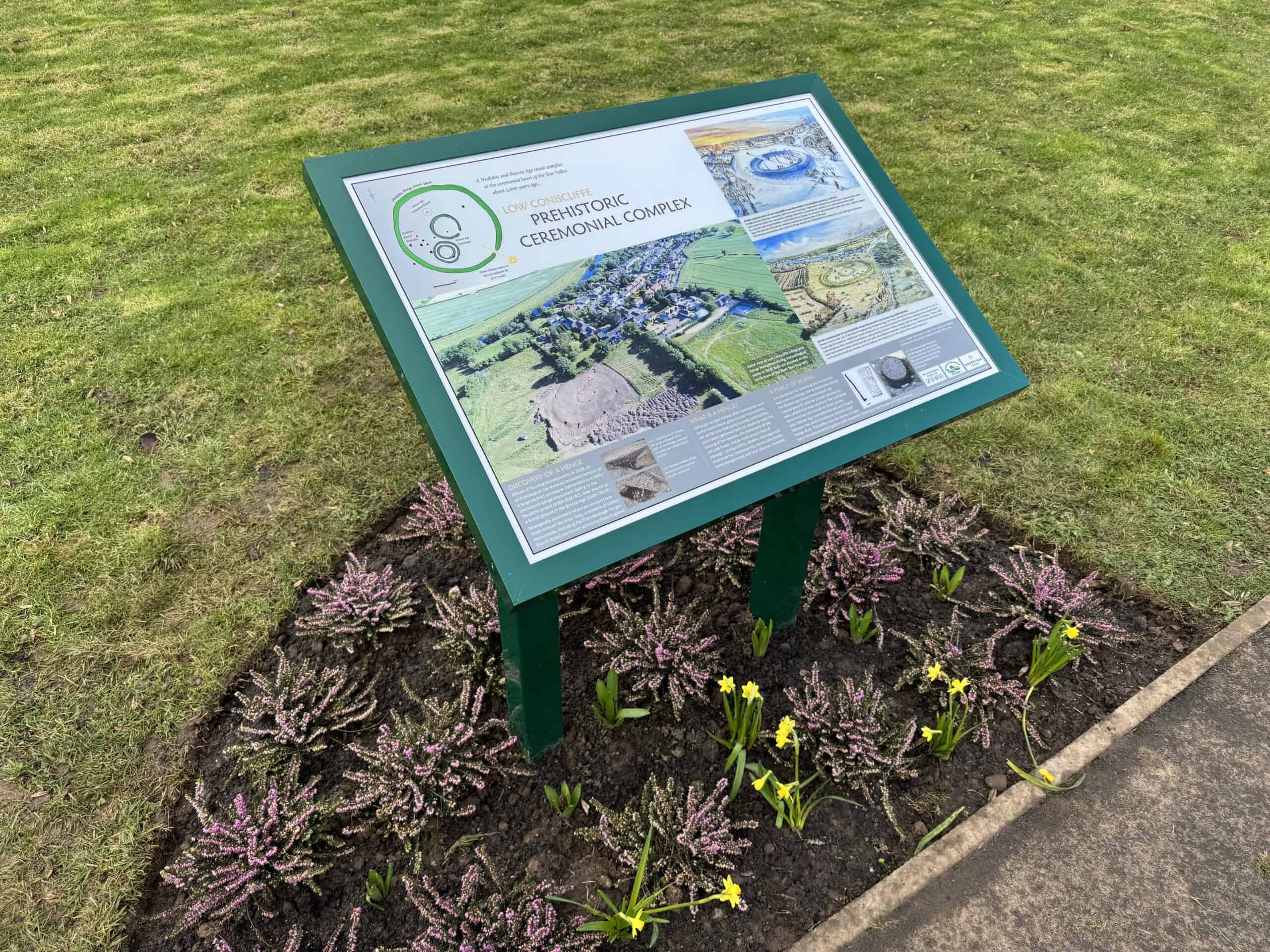
14 Feb 2024
A visitor information sign marking the location of a prehistoric henge complex, estimated to be nearly 5,000 years old, has been unveiled in Low Coniscliffe, near Darlington by Robertson Homes.
Archaeological investigations undertaken before the construction of the Coniscliffe Grange housing development off Gate Lane found the truncated remains of a prehistoric henge monument measuring 45 metres in diameter, dating to the Neolithic period (4300-2000 BC).
Henges are large circular monuments enclosed by a ditch and earthen bank, often with a complex arrangement of marker-posts within. They are thought to have had religious significance to the early farming communities and traders who gathered there for ceremonies and rituals, possibly to mark the passing of the seasons and to calculate astronomical alignments.
The Low Coniscliffe Henge has been identified as one in a series of henges positioned at strategic river crossings along an ancient trade route that broadly mirrors the current A1 corridor in northern England. Experts believe the site was later reused, partially as a burial ground, during the Bronze Age (2500-700 BC).
Due to the wealth of known archaeological remains in the Tees Valley, Durham County Council advised Robertson Homes to commission an archaeological investigation before housing construction began. The Newcastle-based Archaeological Practice went on to discover, excavate and record the henge complex.
Mark Wallace, head of technical at Robertson Homes North East, said: “The investigations uncovered a fascinating insight into the past which have now been documented, helping us understand what certain aspects of life were like thousands of years ago.
“We have strategically placed the new information sign within the area the henge was located and it will be a real point of interest for the local community. The artistic reconstruction of how this site may have looked around 4,000 years ago, showing the sunrise of the winter solstice, is a great way to capture a point in time and will be enjoyed by generations to come.”
Marc Johnstone, project officer at the Archaeological Practice, said: “Due to hundreds of years of ploughing across the field, very little of the monument survived below the topsoil. There was no way the henge would have been discovered, had we not been brought in by Robertson Homes, initially to undertake a geophysical survey which identified the circular ditch.
“This gave us the opportunity to excavate the site and carbon date soil samples, piecing together our understanding of what the site would have been used for.
“With its visible location overlooking the river, we believe it represents a strategic point on a Neolithic routeway, along which prestige goods such as axes and flint tools were traded, whilst the henge itself acted as a spiritual focus and gathering point in the landscape. Although we know little about religion in prehistoric times, it ultimately boils down to a veneration of the natural world and reverence of the ancestors – many complex ceremonies were likely performed here potentially over thousands of years until, for some reason, the site was abandoned in the late Bronze Age.
“Whilst there wasn’t sufficient archaeological remains surviving to justify preserving the site physically, our investigations have enabled us to learn as much as possible from it, preserving the monument through record and by archiving our findings with Durham County Council and the Archaeological Data Service – the national repository for archaeological projects. A copy of the archaeological report has been lodged with Low Coniscliffe and Merrybent Parish Council, who also arranged a public talk for us to present our findings.”
Mark Wallace was joined by Marc Johnstone and members of Low Coniscliffe and Merrybent Parish Council at the unveiling of the information sign on Ash Lane.
Robertson Homes built 30 homes at Coniscliffe Grange with the development now fully sold out. We have further current developments in the North East at Wynyard Estate, near Stockton-on-Tees, Burnopfield and Lambton Park, both in County Durham.



